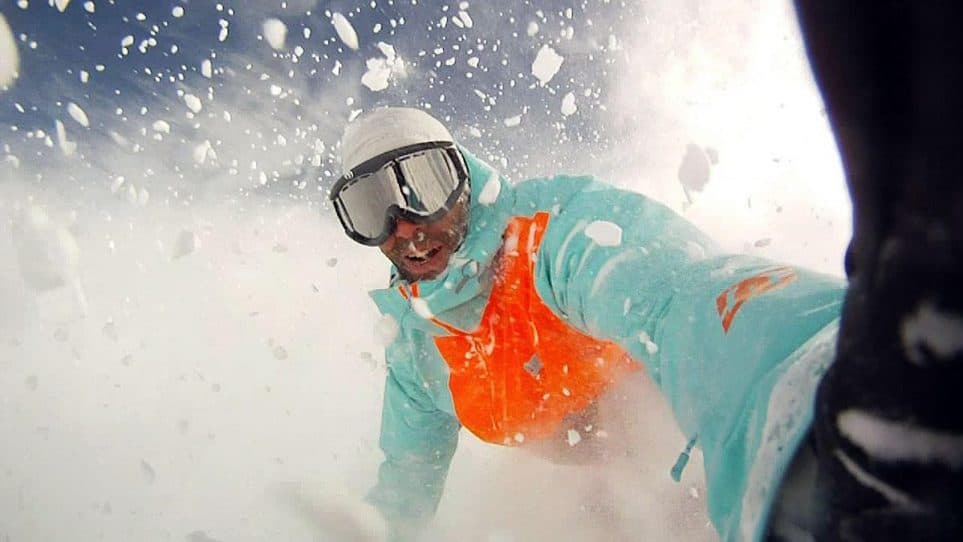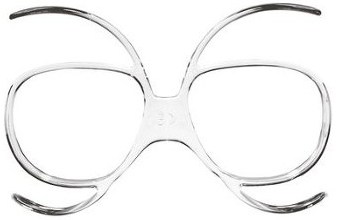Prescription glasses might make you look smart, but most of the time wearing them kind of sucks. Especially when it comes to sports they get in the way. But at some point you just have to give in and use them if you want to see what you are doing, stay at the top of your game, and avoid running over people. Right now summer is coming to an end but that does not mean outdoor sports are over: ski and snowboarding season is just beginning and warm sandy beach with waves is as always just a plane flight away! So below we will share a few tips on how to make the right choice of goggles or glasses when investing in your pair of protective eyewear for snow, swimming or surfing.
Snowboarding and Skiing

With snowboard/ski goggles, first you must choose between the two types of lenses. There are cylindrical lenses which are curved horizontally by being flat vertically, these are traditionally more affordable than goggles with the other type of lenses called spherical lenses. Goggles with spherical lenses typically cost more because of the advantages they offer. By curving around the wearer’s face (horizontally and vertically) they facilitate better peripheral vision all-around, are less prone to glare due to the lack of flat surfaces for the sun to reflect off) and visual distortion problems because of their shape. They also reduce fogging because spherical lenses allow more space for air flow in your goggles. The best way to make sure your goggles don’t fog regardless of their shape is to use anti-fog wipes or spray.
Wearing Contact Lenses
If you wear contacts you will do fine snowboarding in them, but you should still wear goggles over your eyes for protection. Why?
- wind will cause lots of problems with your contacts,
- to prevent injury to the eye area if you collide with other people or debris,
- to shield you from the sun’s harmful UV radiation reflected off the snow.
Wearing Goggles Over Glasses
If you do not wear contact lenses either because you don’t like them or can’t wear them due to say, dry-eye syndrome (wear glasses instead), an alternative is to wear goggles-over-glasses (OTG). This can be uncomfortable as goggles force your glasses into your face and tend to be much bulkier compared to regular goggles. You can also have problems with your glasses fogging under your goggles.
Prescription Lenses Inserts

Prescription Goggles
The best and the most problem free option is to wear prescription goggles. This way you don’t have to worry about your contacts and bringing all your contact lens accessories with you, worry about the ever present possibility of irritation, or have problems with your glasses. Unfortunately this is also the most expensive solution.
Diving
If you are planning a trip to the tropics this winter where you can swim, dive and surf, you too will also need protective eye gear. When it comes to dive masks watch for the following:
- Make sure it comes with 100 percent surgical grade silicone seal, otherwise the shape of your goggles can distort over time leaving you with poorly fitted or leaky mask.
- The other main component of a good diving mask is a good fit.
Contacts or Prescription Lenses?
If you only suffer from mild near or farsightedness you’ll be okay. Objects appear 25% closer and 33% larger under water than in air. But if your vision is more than just a little off you need to do something about that – you need to be able read key data such as air pressure, dive length, depth etc…
When it comes to contacts you can wear them, many divers do. But do consult your optometrist first. Also – there is a danger of loosing them if/when you flood your mask.
Next option is to get a mask with corrective lenses, these are mass produced and come in 0.5 dioptre increments (both plus and minus prescriptions). They will usually have a split screen so you can have different prescriptions for each eye, but only a limited number of mask models also have corrective lenses option. So it will often happen that your favorite mask might not have this possibility.
If neither of these two options solve your problem you will need prescription lens put into your mask by an optician and this can be expensive. You can read more about selecting the perfect diving mask here.
Surfing
Sunglasses
Options for surfers wearing eye protection include sunglasses with good UV protection (i.e., UV400 rated) and shatter-resistant polycarbonate lenses just in case you get hit by a board. Make sure your prescription sports glasses are sturdy and have a good strap so they stay on when you wipeout. Also – choose frames that float in case they do fly off.
Contacts
I have quite a few friends that surf with contacts, but there are a couple of concerns when it comes to surfing with contacts. You’d especially need goggles with prescription lenses if you normally wear contacts because bacteria in the water may adhere to your contact lenses while you’re in the water (you might not remove them all with your contact lens solution). Small abrasions or tears in your eyes can occur from normal contact lens wear, making it possible for any residual bacteria on your lenses to enter your eyes. This could sometimes lead to very serious eye infection (the FDA advises against swimming in contacts due to an increased risk of eye infection from bacteria in water). Also there is always the danger of your contacts being lost in the sea (although that does not happen as often as you might think). A partial solution to both these problems is to have special contacts that you only use for surfing. But as said, if you want to be 100% safe get some good goggles or glasses to keep your eyes in tip top shape and prevent an injury that could ruin a lot more than just your surf session.